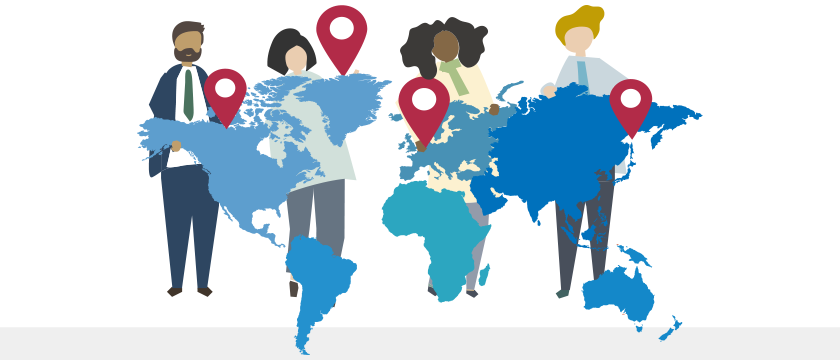Introduction
In the ever-evolving landscape of digital marketing, location-based audience targeting has emerged as a powerful tool for businesses aiming to reach the right consumers at the right place and time. By leveraging geographic data, marketers can craft highly personalized and relevant campaigns that resonate with local audiences, drive foot traffic, and boost conversion rates. This blog delves into the concept of location-based audiences, including its benefits, their programmes, and the latest trends impacting the future in 2024.
What is a Location-Based Audience?
A location-based audience refers to a group of potential customers identified based on their geographic location. This can include data from various sources, such as GPS, IP addresses, Wi-Fi, and beacons, which help marketers understand where their audience is physically located. The primary goal is to deliver content and advertisements that are relevant to users’ locations, enhancing the likelihood of engagement and conversion.
Benefits of Location-Based Audience Targeting
1. Enhanced Relevance and Personalization: Location-based targeting enables marketers to provide visitors highly relevant content according to their present or previous locations. This relevance increases the chances of engagement as users receive information that is pertinent to their immediate context.
- Local Offers and Promotions: Businesses can send location-specific offers to users when they are near a store or in a specific area, driving immediate action.
- Personalized Messaging: Tailoring messages to reflect local culture, events, and weather conditions makes the communication more personal and relatable.
2. Improved Customer Experience: Delivering location-based content can significantly enhance the customer experience by providing timely and useful information.
- Navigation Assistance: Retailers can guide customers to the nearest store locations, enhancing the shopping experience.
- Event Notifications: Businesses can notify users about local events, sales, and special offers happening nearby.
3. Increased Foot Traffic and Sales: Businesses may efficiently boost foot traffic to their physical establishments and enhance sales by targeting consumers based on where they are.
- Geo-Fencing: Creating virtual boundaries around specific locations (e.g., malls, events) to trigger ads or notifications when users enter these areas.
- Proximity Marketing: Sending targeted messages to users within a close range of the business location to encourage immediate visits.
4. Efficient Ad Spend: Location-based targeting ensures that marketing efforts are concentrated on areas with the highest potential for conversion, leading to more efficient use of advertising budgets.
- Reduced Waste: Ads are shown only to users within a specific geographic area, reducing spend on irrelevant impressions.
- Higher ROI: Increased relevance and personalization lead to higher engagement and conversion rates, maximizing return on investment.
Applications of Location-Based Audience Targeting
1. Retail and E-Commerce: Retailers can use location-based targeting to attract nearby customers and drive in-store traffic. For e-commerce, location data can help tailor online offers to local preferences and conditions.
- In-Store Promotions: Sending discount and special offers to customers who are near a physical store.
- Local Inventory Ads: Displaying ads for products available at nearby stores, encouraging local shopping.
2. Restaurants and Food Delivery: Restaurants and food delivery services can leverage location data to attract nearby customers during peak hours or special events.
- Geo-Targeted Offers: Sending time-sensitive offers to users in the vicinity during lunch or dinner hours.
- Order Tracking: Providing real-time updates on delivery status based on the customer’s location.
3. Travel and Hospitality: Travel and hospitality businesses can use location-based targeting to engage travellers and tourists.
- Local Attractions: Promoting nearby attractions, tours, and activities to tourists based on their current location.
- Personalized Recommendations: Offering personalized dining, accommodation, and activity recommendations to travellers.
4. Real Estate: Real estate agencies can target potential buyers and renters based on their location preferences and browsing behaviour.
- Geo-Targeted Listings: Displaying property listings to users searching within specific neighbourhoods or cities.
- Open House Alerts: Notifying users about upcoming open houses and property viewings in their area.
Trends in Location-Based Audience Targeting for 2024
1. Advanced Geo-Fencing: Geo-fencing technology is becoming more sophisticated, allowing for more precise targeting. Businesses can now create highly specific boundaries, such as individual streets or buildings, to trigger location-based ads and notifications.
- Micro-Geo-Fencing: Targeting users within extremely precise locations, such as specific stores within a mall.
- Customizable Boundaries: Creating dynamic geo-fences that adjust based on user behaviour and movement patterns.
2. Integration with Augmented Reality (AR): Augmented Reality (AR) is enhancing location-based marketing by providing immersive and interactive experiences.
- AR Navigation: Guiding users to stores, events, or attractions with augmented reality overlays.
- Interactive Ads: Creating AR-based ads that users can interact with based on their location.
3. Privacy First Approach: With increasing concerns about privacy, location-based marketing is evolving to prioritize user consent and data protection.
- Transparent Data Usage: Ensuring users are aware of how their location data is being used and obtaining explicit consent.
- Data Anonymization: Using anonymized location data to protect user identities while still delivering relevant ads.
4. Real Time Analytics and Insights: Real-time analytics are becoming crucial for optimizing location-based campaigns. Marketers can now track and analyse user movements and behaviours in real-time to adjust strategies on the fly.
- Live Campaign Adjustments: Modifying ad content and targeting parameters in real time based on user interactions and location data.
- Instant Feedback: Gaining immediate insights into campaign performance and user engagement.
Conclusion
Location-based audience targeting is revolutionizing digital marketing by enabling highly personalized, relevant, and timely interactions with consumers. As technology advances and new trends emerge, businesses have more opportunities than ever to leverage location data to enhance customer experiences, drive foot traffic, and increase sales. By staying ahead of these trends and adopting a privacy-first approach, marketers can create effective location-based campaigns that resonate with today’s mobile-savvy consumers.
To learn more or to acquire our services, please contact us at info@paypercampaign.com





